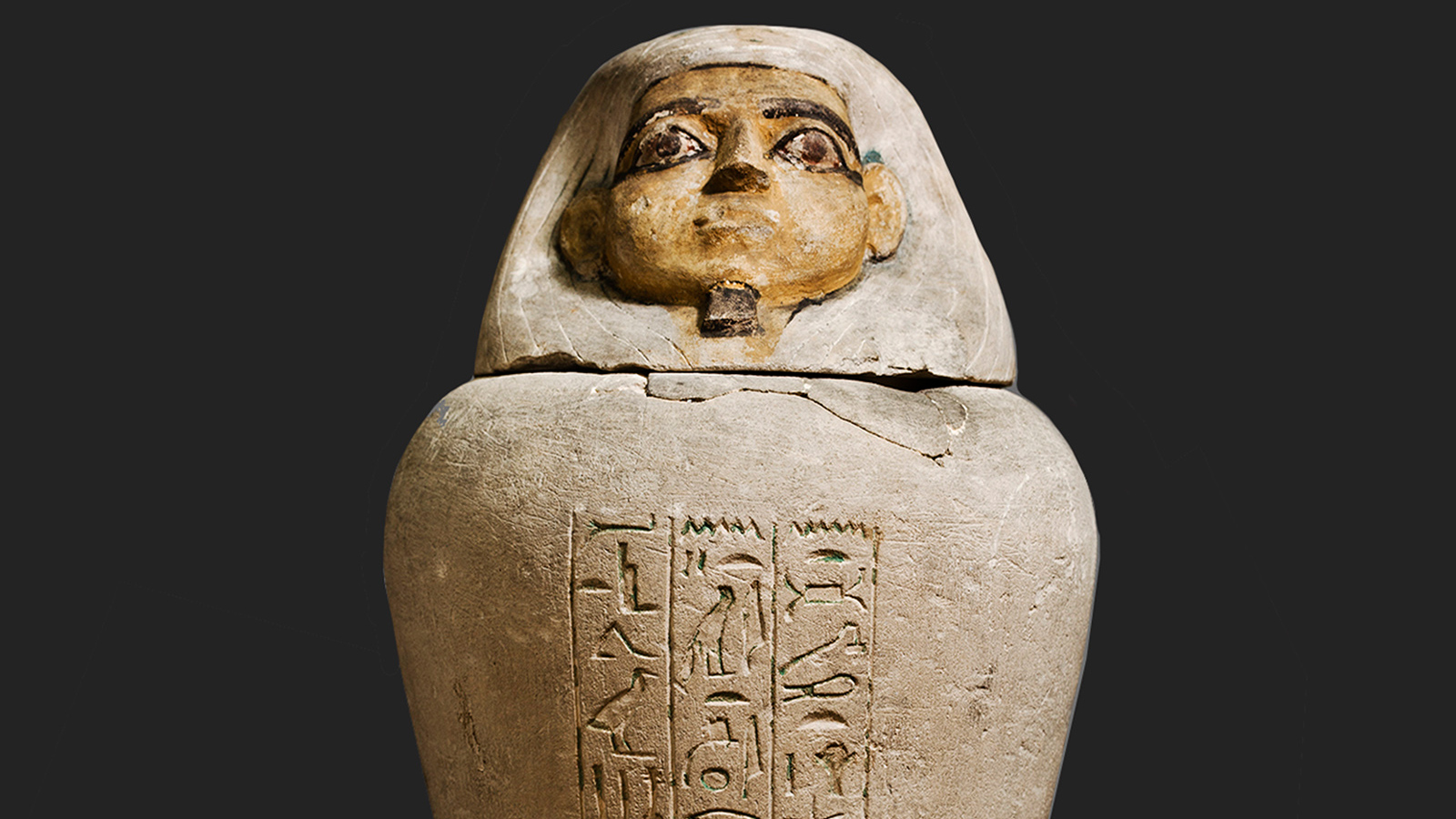Visiting Artwork: Canopic Jar of Iunefer
In Search of Eternity
Event Slider
Date
- Closed on Tuesday
Date
- Closed on Tuesday
Canopic jars, or viscera jars, were used in Ancient Egypt from the time of the Old Kingdom (2570-2450 B.C.E.) to the Ptolemaic Period (305-30 B.C.E.).
Their purpose was to contain the internal organs of the deceased, removed during the embalming process, to be later placed in their tombs.
The full set was composed of four of these jars, each of which was dedicated to a god who would protect the tomb and reserved to contain a specific organ. The four jars were then placed in a canopic chest, which was generally decorated with offering formulae and female protective divinities, as well as the name of the person interred there.
The four protective gods of the tomb – the genii – were those known as the Sons of Horus, who can be seen in many other works from the collection of Egyptian art of the Calouste Gulbenkian Museum. Each of them protected one of the internal organs of the deceased: Imsety protected the liver; Hapi, the lungs; Kebehsenuef, the intestines; and Duamutef, as is the case with this jar, protected the stomach.
Due to the repeated plundering of the tombs of Ancient Egypt, especially those of the most important figures – like the pharaohs buried in the Valley of the Kings – few tombs have reached the present day inviolate and with their spoils untouched, meaning that not many canopic jars have survived intact.
The jar now on display is nonetheless a particularly interesting example, not just because of its excellent state of conservation, with the polychrome on the lid almost undamaged, but also due to its extremely expressive nature, eschewing the more formal and hieratic representations of the face that often decorated the lid of the jar.
In fact, this type of decoration only began to be used during a later period of the Old Kingdom, and the first canopic jars had plain, undecorated lids. Even later, during the Middle Kingdom, the representations on each of the four canopic jars in a tomb began to resemble one another, probably an attempt to reproduce on each one the face of the deceased.
This canopic jar, which belonged to a man named Iunefer, was exhumed from a tomb in Hawara, near the Faiyum Oasis, and the inscription that names him also mentions the Son of Horus Duamutef – meaning that it would have contained the dead man’s stomach – as well as the goddess Neith, who would also have protected this organ.
